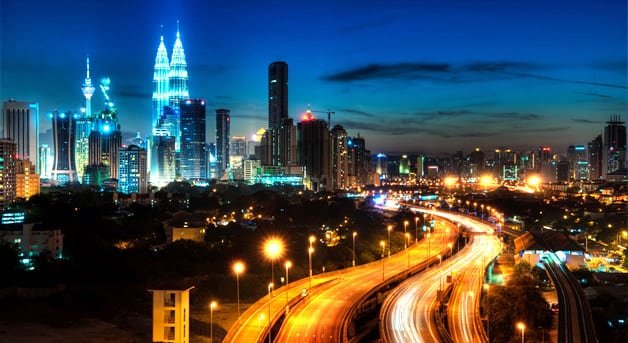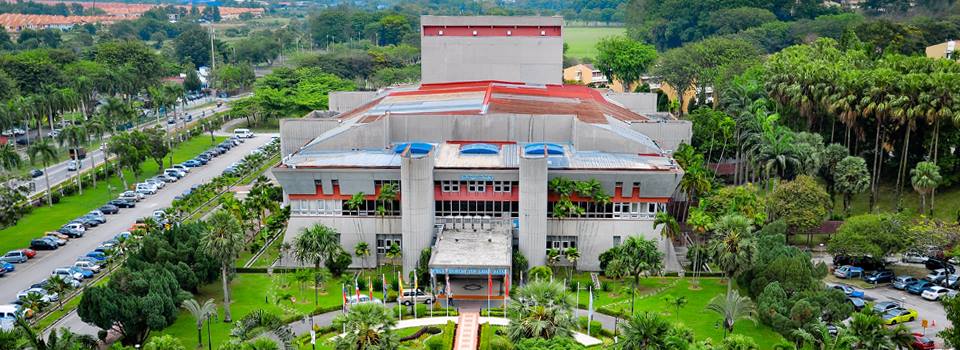Malaysia is a federal constitutional monarchy located in Southeast Asia.Consists of two geographical regions divided by the South China Sea: the peninsular Malaysia (or West Malaysia) on the Malay Peninsula bordered by Thailand on the north and Singapore in south, and Malaysian Borneo (or East Malaysia) located on the northern part of the island of Borneo, bordering Indonesia and surrounding the Sultanate of Brunei. Malaysia has its origins in the Malay kingdoms present in the area which, from the 18th century, became subject to the British Empire. The first British territories were known as the Straits Settlements, whose establishment was followed by the Malay kingdoms becoming British protectorates. The territories on Peninsular Malaysia were first unified as the Malayan Union in 1946.
Ethnic Malays comprise some 60% of the population. Chinese constitute around 26%; Indians and indigenous peoples make up the rest. The country is multi-ethnic and multi-cultural, which plays a large role in politics. The constitution declares Islam the state religion while allowing freedom of religion for non-Muslims. The government system is closely modeled on the Westminster parliamentary system and the legal system is based on common law. The head of state is the king, known as the Yang di-Pertuan Agong. He is an elected monarch chosen from the hereditary rulers of the nine Malay states every five years. The head of government is the Prime Minister.
The local climate is equatorial tropical, and characterized by the annual southwest (April to October) and northeast (October to February) monsoons.] The temperature is moderated by the presence of the surrounding oceans. Humidity is usually high, and the average annual rainfall is 250 cm (98 in). The climates of the Peninsula and the East differ, as the climate on the peninsula is directly affected by wind from the mainland, as opposed to the more maritime weather of the East. Local climates can be divided into three regions, highland, lowland, and coastal. Climate change is likely to affect sea levels and rainfall, increasing flood risks and leading to droughts.
Education and Best College
As one of south-east Asia’s most vibrant economies, Malaysia economic prospects have been dented by the global economic downturn, which has hit export markets hard. In March 2009 the government unveiled a $16bn economic stimulus plan as it sought to stave off a deep recession. Malaysia is an increasingly popular choice for international students, and has set an ambitious goal of becoming the world’s sixth largest education exporter by 2020. They were sure invest the country money and time to make their human resources compete in international world.
University Malaya
 The highest-ranking Malaysian institution is Universiti Malaya (UM), a public research university based in Malaysia’s federal capital and largest city, Kuala Lumpur (which features in the QS Best Student Cities). Malaysia’s oldest university, Universiti Malaya was established in 1949, based on a merger of several existing colleges in neighboring Singapore. It offers courses across the full subject spectrum, with an enrollment of more than 12,000 undergraduate students and more than 11,000 postgraduates.Universiti Malaya ranked 33rd in the latest QS University Rankings: Asia, and placed 167 in the 2013/14 QS World University Rankings®. It’s a popular choice among international students, especially at postgraduate level; in 2013, almost a quarter of postgraduate students were from outside Malaysia.
The highest-ranking Malaysian institution is Universiti Malaya (UM), a public research university based in Malaysia’s federal capital and largest city, Kuala Lumpur (which features in the QS Best Student Cities). Malaysia’s oldest university, Universiti Malaya was established in 1949, based on a merger of several existing colleges in neighboring Singapore. It offers courses across the full subject spectrum, with an enrollment of more than 12,000 undergraduate students and more than 11,000 postgraduates.Universiti Malaya ranked 33rd in the latest QS University Rankings: Asia, and placed 167 in the 2013/14 QS World University Rankings®. It’s a popular choice among international students, especially at postgraduate level; in 2013, almost a quarter of postgraduate students were from outside Malaysia.University Sains Malaysia
 Established as the second university in the country in 1969, University Sains Malaysia (USM) was first known as the University of Penang, before the University’s Act came into effect on 4th October 1971. The university has been developing and expanding since its inception, which started with the enrolment of 57 science based students. Now, USM offers courses at undergraduate and postgraduate levels to approximately 20,000 students. USM has also become a well-known university locally and internationally.Since its beginning, USM has implemented a school system, as opposed to the traditional faculty system. What is unique about this system is that each school could full fill the needs of a more focused degree in the chosen area of study and at the same time, students could have the opportunity to explore other areas of study offered by another school. The interdisciplinary approach ensures that USM, the first in the country to adopt this system, would produce trained, multi-skilled graduates. USM main campus is located within a tropical island of Penang, Malaysia. There are two USM branch campuses, one at Kubang Kerian in Kelantan known as Health Campus and the other at Nibong Tebal, known as Engineering Campus.
Established as the second university in the country in 1969, University Sains Malaysia (USM) was first known as the University of Penang, before the University’s Act came into effect on 4th October 1971. The university has been developing and expanding since its inception, which started with the enrolment of 57 science based students. Now, USM offers courses at undergraduate and postgraduate levels to approximately 20,000 students. USM has also become a well-known university locally and internationally.Since its beginning, USM has implemented a school system, as opposed to the traditional faculty system. What is unique about this system is that each school could full fill the needs of a more focused degree in the chosen area of study and at the same time, students could have the opportunity to explore other areas of study offered by another school. The interdisciplinary approach ensures that USM, the first in the country to adopt this system, would produce trained, multi-skilled graduates. USM main campus is located within a tropical island of Penang, Malaysia. There are two USM branch campuses, one at Kubang Kerian in Kelantan known as Health Campus and the other at Nibong Tebal, known as Engineering Campus.University Kebangsaan Malaysia
 The Universiti Kebangsaan Malaysia (UKM), also known as the National University of Malaysia (NUM). UKM today has expanded to 13 well-established faculties, 16 institutes and 18 centres. In addition, UKM has established a private limited holding company known as UKM Holdings, which handles the commercial activity of UKM. Currently, UKM has about 19,371 undergraduate students, and 12,838 postgraduate students of which 3,347 are foreign students from 35 different countries. Since its establishment in 1970 up till 2011, the University has produced more than 146,417 graduates; 124,838 Bachelors, 19,688 Masters and 1891 PhDs. UKM has been chosen as one of the four research universities in Malaysia in 2006.
The Universiti Kebangsaan Malaysia (UKM), also known as the National University of Malaysia (NUM). UKM today has expanded to 13 well-established faculties, 16 institutes and 18 centres. In addition, UKM has established a private limited holding company known as UKM Holdings, which handles the commercial activity of UKM. Currently, UKM has about 19,371 undergraduate students, and 12,838 postgraduate students of which 3,347 are foreign students from 35 different countries. Since its establishment in 1970 up till 2011, the University has produced more than 146,417 graduates; 124,838 Bachelors, 19,688 Masters and 1891 PhDs. UKM has been chosen as one of the four research universities in Malaysia in 2006.
Like most of the top universities in Malaysia, Universiti Kebangsaan Malaysia is publicly funded, with a fairly large intake of students at both undergraduate and graduate levels, teaching a comprehensive range of subjects alongside a strong research focus. It has its main campus in Bangi, a small town in the Selangor region to the south of Kuala Lumpur. Universiti Kebangsaan Malaysia ranked 57th in the 2013 QS University Rankings: Asia, and 269= in the 2013/14 QS World University Rankings. It scores especially well for its success in attracting overseas faculty members, ranked 12th in Asia on this indicator – two places above Universiti Malaya.



